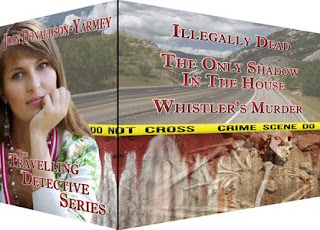 |
| Buy here |
Winter is drawing in in my part of the world and as I snuggle
down beneath my nice warm sheets and blankets I appreciate, once again, how
lucky I am. There have only been a few nights in my life when I have not slept
in the comfort of my own bed. On a cold winter’s night when I am snug and warm
under my blankets I think of all the people out there in the world who do not
have a bed to climb into, but are forced to spend their nights huddled up on
cold footpaths or park benches. To my mind it is a roaring disgrace that in
countries like mine where we are supposed to be civilized and care for the less
fortunate in our society, that there are far too many homeless living on the
streets of the cities.
I’ve just been out to my letter box which contained a flyer
from The Salvation Army. It states that 44,000 young Australians are homeless
this year, and 53% have diagnosed mental health conditions. Thank God there are
charitable organisations doing their best to provide hot meals and a warm place
to sleep to these unfortunate folk.
What I find disgraceful is to hear that some of these
homeless people are Veterans of one war or another. Destitute and suffering
from post-traumatic stress disorder most are unable to settle into normal lives
after the horrors they lived through while fighting for their country.
Beds have played a large part in most of our lives. I can
recall how I pulled the sheet over my head as a child knowing this rendered me
safe from ghoulies and ghosties and things that go bump in the night. I can
remember my first night of marriage as if it was yesterday. Full of the joys
and happiness of a young new bride, unaware of what life held. Then there was
the horror of waking up in the middle of the night in a hospital recovery ward
with a mask over my face as I came out of the anaesthetic induced sleep.
All things considered I have not really had many bad
experiences in my bed—well to be honest—practically none. My bed has always
been a place of warmth in winter, and comfort in times of sickness.
As a writer of historicals and time-travels, different types
of sleeping arrangements have played a large part in my stories.
In my Wild Heather series where they travel back to Scotland
in the 1050s I have them sleeping on a bed of straw covered by animal hides. Quite
primitive, but cosy enough beneath the sheepskins. In those times only the
Laird or his close family would have separate sleeping quarters. The rest of
his clan slept in the main hall, which didn’t leave a lot of room for privacy.
In my Settlers series set in Australia of the early 1800s
they weren’t so bad off and by then probably had proper beds to sleep on,
although these would still have been furnished roughly with animal hides and
rudimentary bedding. But imagine the plight of the convicts transported from
England. The conditions on those early sailing ships would have been
horrendous. It’s no wonder a lot of those transported didn’t make it, especially
the children
Viking beds were probably lined with straw. An
interpretation of an open bed at Eiríksstaðir is shown to the left. It's lined
with straw and covered with an animal skin.
On either side of the central corridor (between the roof
support columns and the walls) in the Viking longhouse, raised wooden benches
topped with wooden planks ran the length of the longhouse. They provided a
surface for sitting, eating, working, and sleeping.
Taken from this site:
The following information on medieval sleeping arrangements
is taken from this site:
In the 14th century the poorest people slept on a straw mattress on the floor with whatever warm covering they could get. The richest houses had large elaborate beds, with ornamented canopies, richly-embroidered hangings, and soft featherbeds under the fine linen sheets. They were among the most splendid pieces of furniture in a large house, and noblemen often had their emblems embroidered on the hangings. They were a comfortable place to meet for a chat, or receive guests, while displaying an abundance of fine textiles. They could be social gathering places at night too, as visitors of high status would be invited to sleep in a bed even if they had to share.
(Imagine inviting your guests to share your bed)
The picture from 14th or 15th century France shows a canopied, curtained bed with a head sheet laid over the pillow resting on a sheet-draped bolster. Head sheets were gradually replaced by pillowcases and are not usually mentioned after 1500. A pillowcase was always called a pillow bere (bearer) until about the 16th century, but this could mean various kinds of pillow cover, not necessarily a linen pillowcase matching the sheets.
So all in all, beds have played a large part in everyone’s life since the cavemen I guess. But I am so glad I have my nice cosy bed to climb into every night.
You can find information on all my books on my Books We Love page here:
 |
| click here |







.jpg)


















